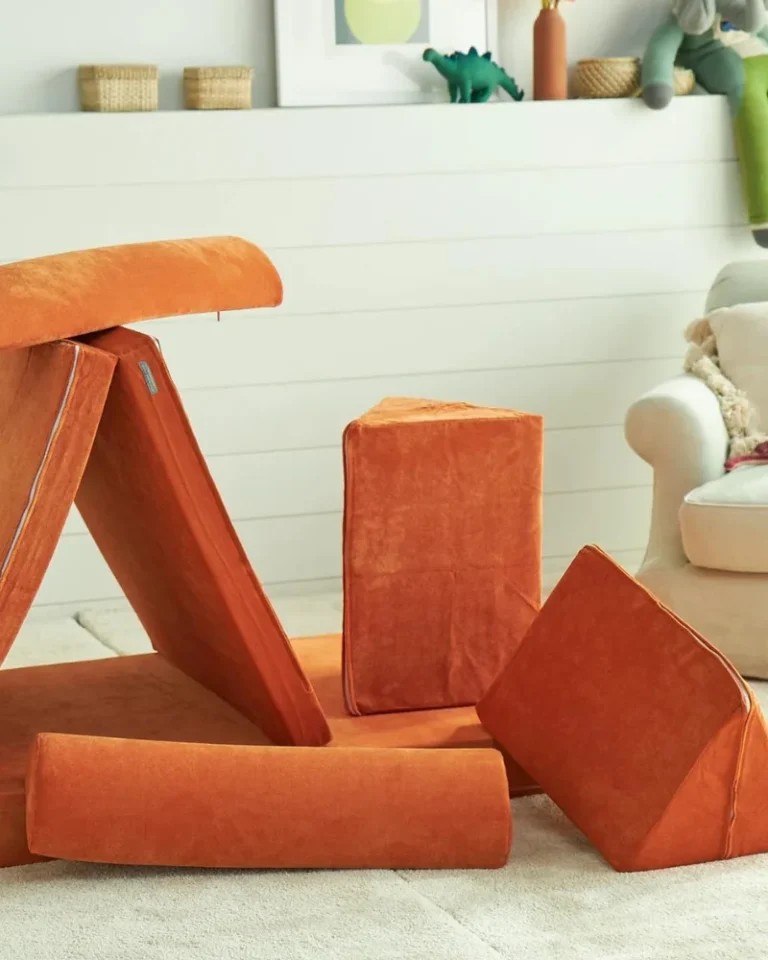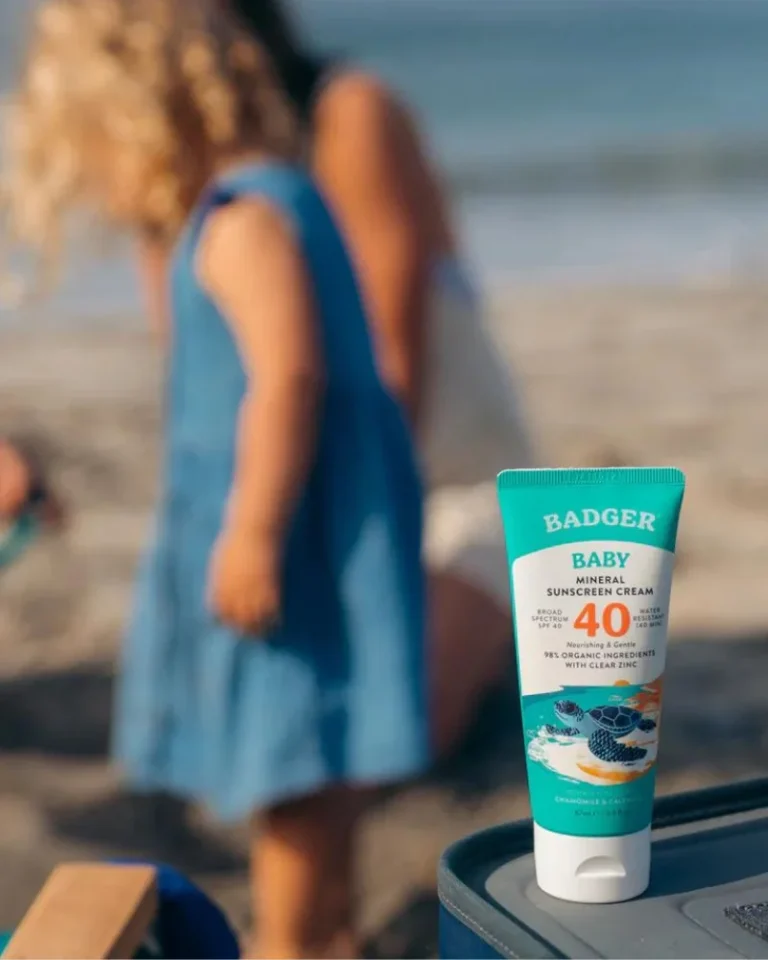This post may contain affiliate links. By browsing this website, you agree to our disclaimer, privacy policy, and terms of use.
If you’re in the midst of a home remodel and looking for some eco-friendly home insulation materials, you’re not alone! Today, over 72% of homeowners prioritize sustainability when making home improvement decisions.
As passionate advocates for sustainable living, we at THC understand the importance of creating a comfortable and eco-friendly home for our families.
Sustainability doesn’t just stop at the towels you buy or the kitchen utensils you use. Building materials have one of the largest environmental footprints, so anywhere we can find more sustainable solutions is important, including choosing the best insulation materials for our homes. Every little bit adds up!
In this post, we’re going to explore the growing demand for eco friendly insulation for homes and introduce some of the best options available in 2024.
Top Eco-Friendly Insulation Materials for 2024
1. Cellulose
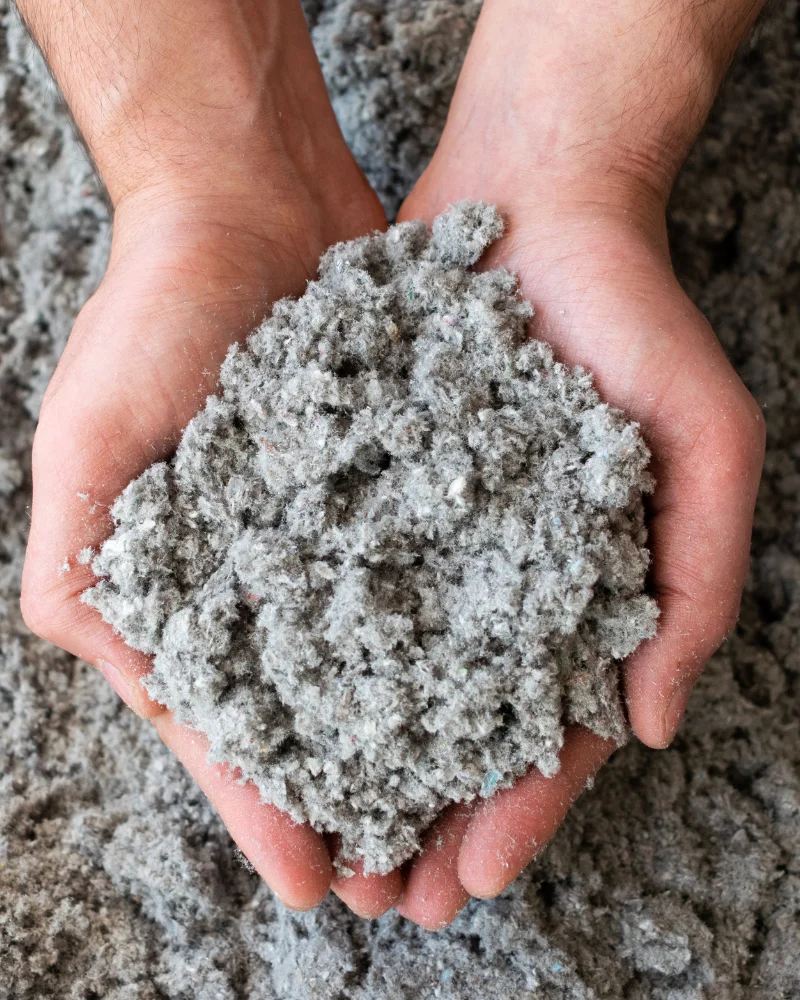
If you’re on a mission to create a healthier, more sustainable living space, cellulose insulation is a great option to consider. This eco-friendly insulation material is made from recycled newsprint and other paper products, making it a safe and non-toxic choice for your home.
By using recycled paper that would otherwise end up in landfills, cellulose insulation helps reduce waste and prevents the release of harmful greenhouse gases.
Performance-wise, cellulose offers good thermal resistance, with an R-value ranging from 3.1 to 3.7 per inch. It also provides excellent sound absorption, helping to create a quieter and more peaceful home.
While cellulose insulation is relatively low in cost and can be a DIY project with the proper equipment, it’s important to note that it does absorb moisture and requires proper ventilation.
- Cost: $
- Material source: Made from recycled paper products. Reduces landfill waste.
- Drawbacks/Considerations: Absorbs moisture and needs proper ventilation, may require professional installation for dense packing.
- DIY friendly? Possible for attics with proper equipment. Otherwise, professional installation is recommended.
- Notable Features: R-value: 3.1 – 3.7 per inch | Noise dampening: Good / Good thermal resistance / Good sound absorption
2. Cork
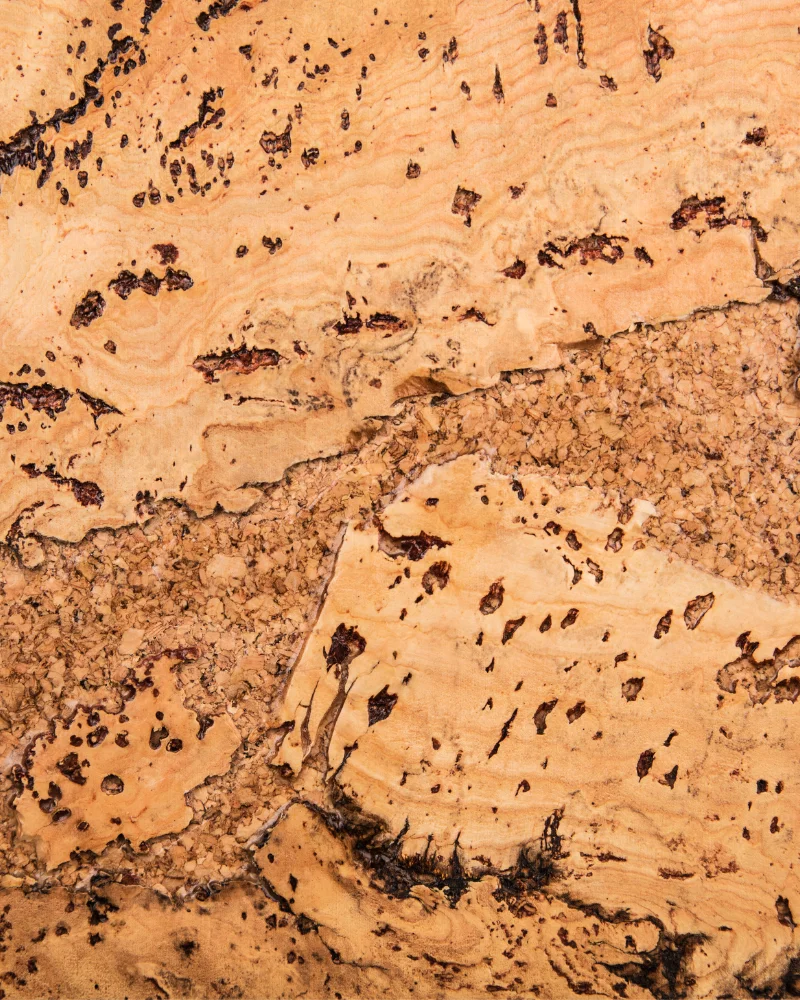
Cork insulation is derived from the outer bark of oak trees, a 100% natural, renewable, and recyclable resource. As a biological material, cork has a negative carbon footprint that absorbs excess carbon dioxide, even when installed in your home’s walls.
This carbon-neutralizing capability, combined with resistance to mold and moisture, arguably makes cork one of the most eco-friendly insulation materials available.
In terms of performance, cork offers excellent thermal resistance with an R-value of 4 per inch, helping to keep your home comfortable year-round. Cork is naturally fire-resistant and mold-resistant, so you can have full confidence in its safety for your home.
If you’re willing to invest in a material that not only insulates your home effectively but also contributes to a greener planet, cork is definitely worth considering.
- Cost: $$$
- Material source: Harvested from the bark of cork oak trees, without harming the tree. Renewable resource with a long lifespan.
- Drawbacks/Considerations: Higher cost, limited availability in some regions.
- DIY friendly? No, professional installation is recommended due to rigidity and specialized techniques.
- Notable Features: R-value: 4 per inch | Noise dampening: Good | Renewable resource | Sustainable harvesting practices | Naturally fire-resistant | Mold-resistant
3. Cotton/Denim
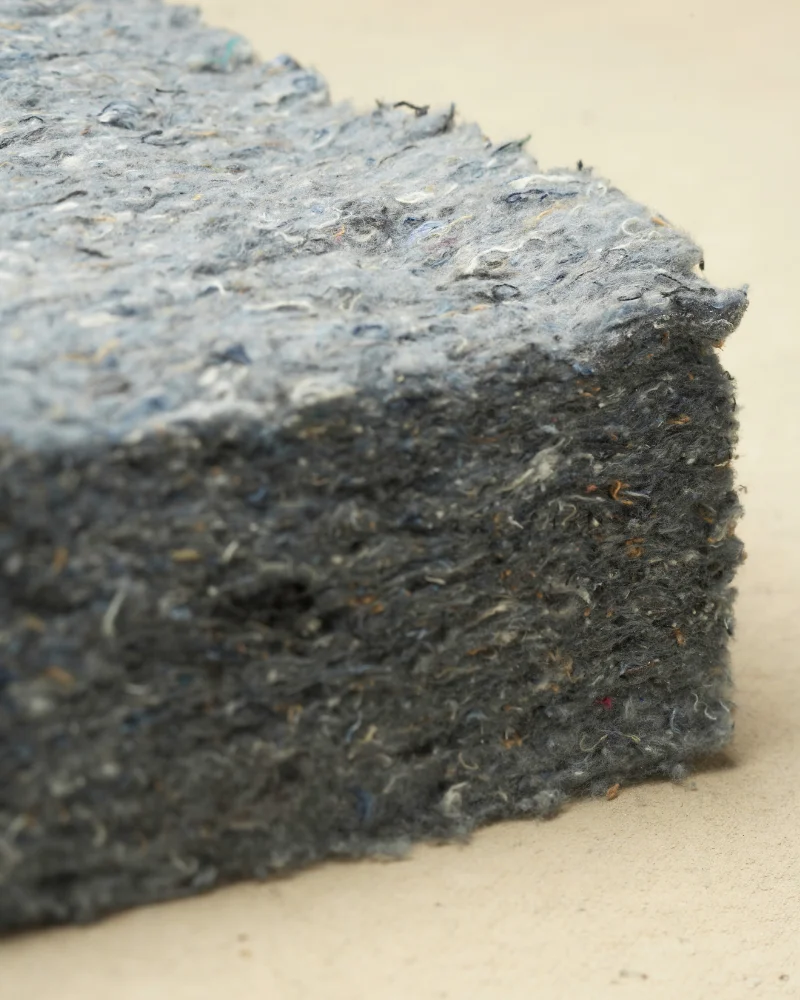
When it comes to eco-friendly insulation options, cotton, and denim are two materials that often fly under the radar. However, these natural and renewable resources are starting to make a name for themselves.
Cotton and denim insulation are typically made from recycled materials, like leftover blue jean scraps and repurposed fabrics. These materials are shredded and transformed into thick batts, which are excellent eco-friendly insulation materials for walls, similar to traditional fiberglass insulation.
By using recycled textiles, you’re helping to reduce waste and keep materials out of landfills.
One key benefit of cotton insulation is its natural resistance to fire. Unlike fiberglass, cotton insulation is also free from formaldehyde, a chemical linked to cancer and respiratory issues.
In terms of performance, cotton and denim insulation offer good thermal resistance, with an R-value ranging from 3.5 to 4 per inch. They also provide effective moisture control and decent sound absorption.
As a bonus, cotton is naturally resistant to insects, making it a great choice if you are concerned about pest infestations.
- Cost: $$
- Material source: Made from recycled denim scraps and cotton textile waste. Reduces landfill waste.
- Drawbacks/Considerations: May contain allergens from dust and fibers, may require professional installation for dense packing.
- DIY Friendly? Possible for attics with proper equipment, otherwise professional installation recommended.
- Notable Features: R-value: 3.5 – 4 per inch | Noise dampening: Moderate | Recycled content, reduces textile waste | Good moisture control | Good thermal resistance
4. Hemp
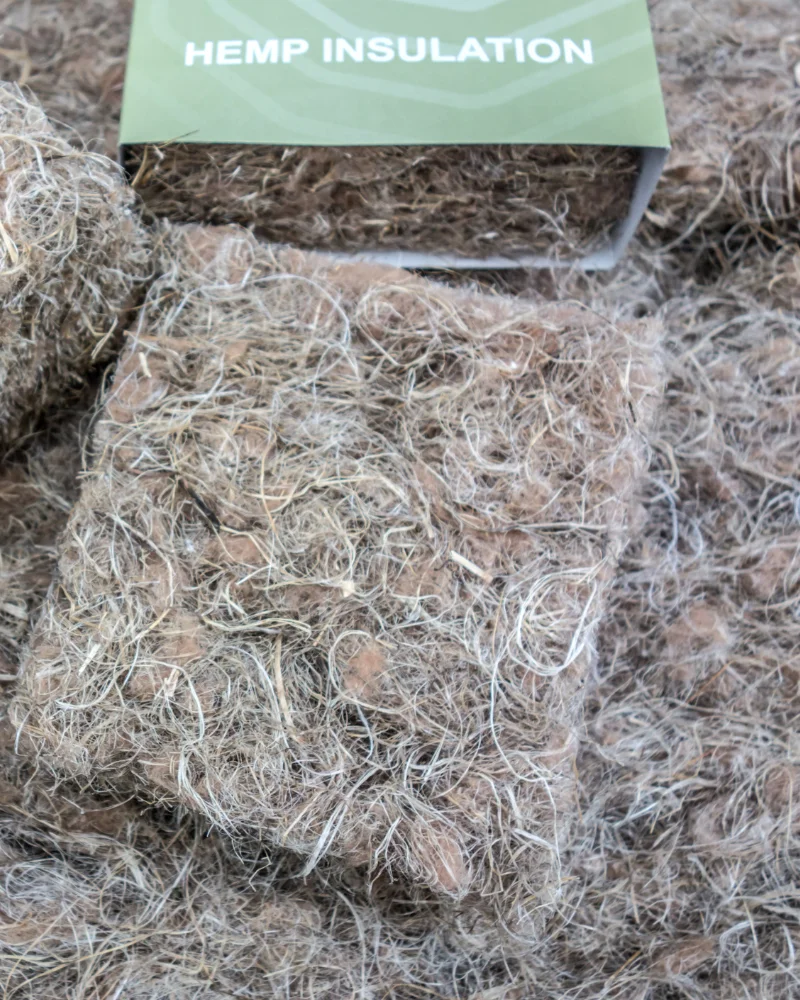
Made from 90% natural hemp fiber and 10% polymer fiber, this innovative material offers an impressive R-value of 3.7 per inch, making it one of the best options if you need a good thermal insulator. But that’s just the beginning of hemp’s eco-friendly advantages.
Hemp insulation is completely recyclable, non-irritating, and free from harmful chemicals, making it a safe and sustainable choice for your home.
Even better is that hemp is a completely renewable resource. It grows quickly, requires minimal water, and thrives in various soil types. It even acts as a natural air purifier, absorbing CO2 from the atmosphere.
Available in both batts and boards, hemp insulation is easy to install and can be cut to fit any space. It offers excellent moisture control, sound absorption, and natural resistance to fire and pests.
While it may be slightly more expensive than traditional options, its performance benefits make it a worthwhile investment.
Keep in mind that hemp insulation may not be the best choice for very damp areas like basements, but a vapor barrier can help protect it from excessive moisture.
- Cost: $$- $$$
- Material source: Fast-growing and renewable crop with low water requirements.
- Drawbacks/Considerations: Relatively new material, limited availability in some regions, can be more expensive than traditional options.
- DIY friendly? Possible for attics with proper equipment, otherwise professional installation recommended due to possible settling.
- Notable Features: R-value: 4 per inch | Noise dampening: Good | Renewable resource, low environmental impact | Excellent thermal resistance | Naturally fire-resistant and pest-resistant.
5. Sheep’s Wool
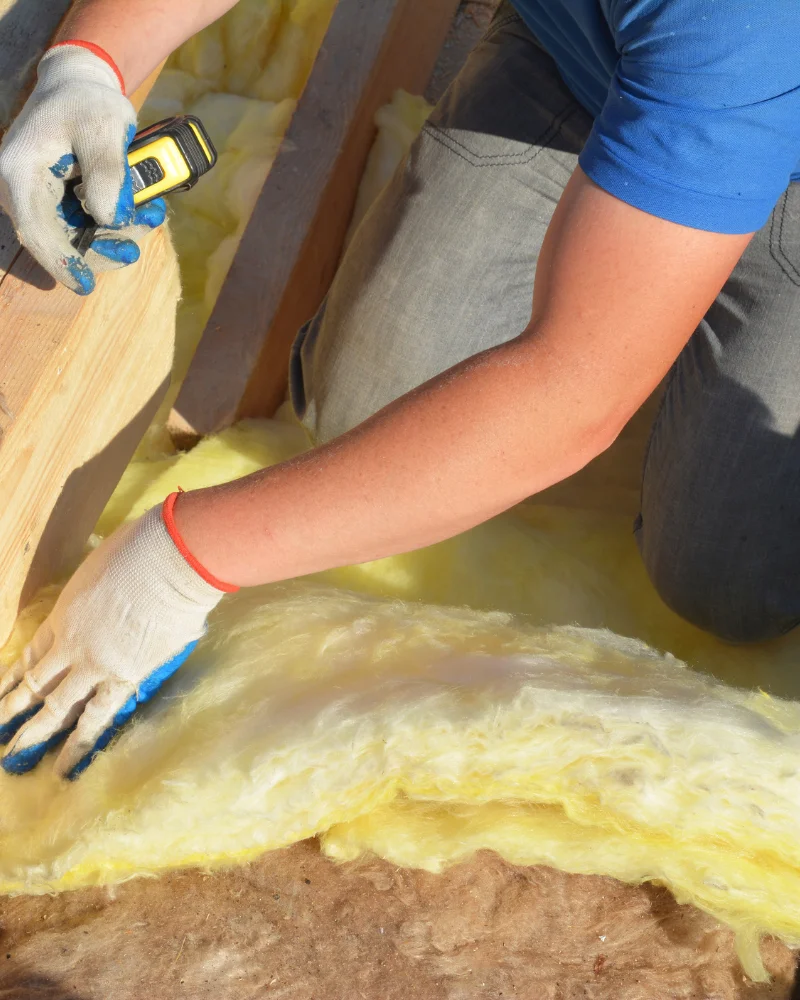
Sheep’s wool is not just for sweaters and socks anymore. This natural, fire-resistant material has found a new purpose as an eco-friendly insulation option for homes. By harnessing the same insulating properties that keep sheep warm in colder temperatures, sheep’s wool can help regulate your home’s temperature year-round.
The magic lies in the compressed wool fibers, which create millions of tiny air pockets. These pockets disrupt heat transfer, providing excellent thermal resistance. The wool’s outer layer is water-resistant, while the inner layer absorbs moisture, preventing condensation and maintaining its insulating properties even in damp conditions.
Sheep’s wool insulation is available in batts for walls, which can be a DIY project, but professional installation is recommended for loose-fill applications.
While sheep’s wool insulation may be more expensive than some alternatives and can contain allergens like lanolin, its benefits make it a worthwhile investment. It offers very good moisture control, good sound absorption, and natural fire resistance when treated.
- Cost: $$
- Material source: Natural and renewable resource, byproduct of sheep farming.
- Drawbacks/Considerations: May contain allergens (lanolin), can be more expensive than some options.
- DIY friendly: Possible for batts in walls, professional installation recommended for loose-fill.
- Notable Features: R-value: 3.5 – 4 per inch | Noise dampening: Good | Renewable resource, biodegradable | Excellent thermal resistance | Very good moisture control | Naturally fire-resistant (when treated).
6. Wood Fiber
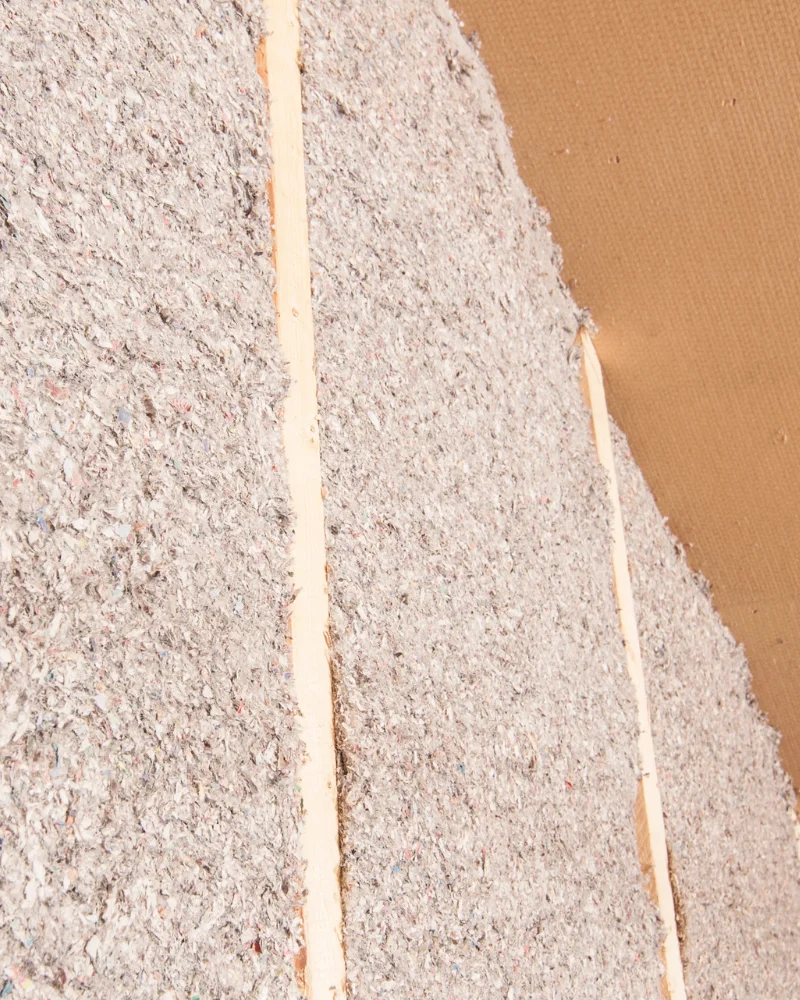
Wood fiber insulation is a natural, high-performing, and renewable option that makes for a great home insulation choice.
Made from wood harvested from sustainable forests or recycled wood waste, it’s both safe and recyclable. Most wood fiber products do not contain artificial additives, making them easily recyclable or even compostable.
One of the most significant advantages of wood fiber insulation is its ability to act as a natural carbon sink. Forests store more carbon dioxide than they release into the atmosphere. In fact, the insulation used in an average single-family home binds as much CO2 as a small car emits over 50,000km. That’s pretty cool!
In terms of performance, wood batt insulation is an excellent thermal insulator, beating out most traditional insulation options. It also has a high capacity to absorb and release moisture, thanks to its natural vapor-permeable quality. This makes wood fiber insulation a good option if you are looking to reduce the risk of mold in your home.
Installing wood batt insulation is fairly easy. Its high density eliminates the need for additional support and prevents sagging. It can be easily cut to shape without producing irritating fibers, unlike some other insulation materials.
- Cost: $$
- Material source: Made from recycled wood waste or sustainably harvested wood. Reduces landfill waste or promotes sustainable forestry practices.
- Drawbacks/Considerations: May require a vapor barrier to prevent moisture accumulation, can be denser than some options, potentially allergenic for some people.
- DIY friendly: Possible for batts in walls, professional installation recommended for loose-fill cellulose for proper density.
- Notable Features: R-value: 3.1 – 3.7 per inch | Noise dampening: Good | Good sound absorption | Naturally breathable | Can help regulate moisture levels
7. Aerogel
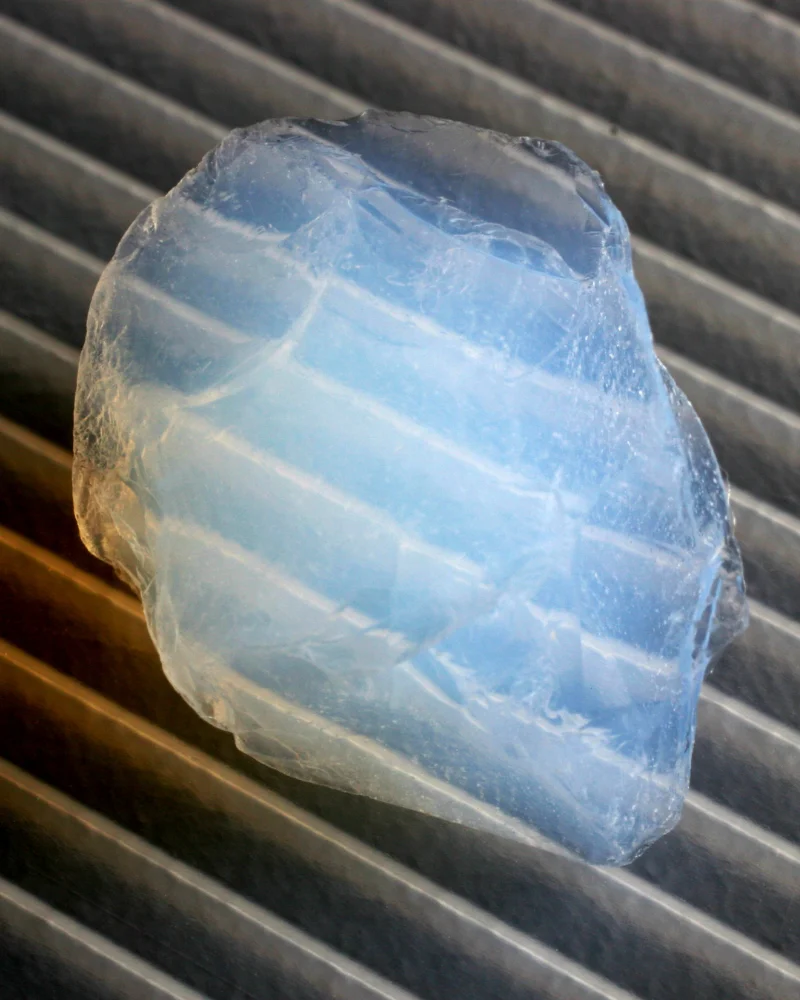
Since it was discovered in the 1930s, aerogel has evovled to become the “superman” of insulation materials.
This man-made marvel is composed of 90% air, making it ultra-lightweight yet incredibly effective at preventing heat transfer. With an impressive R-value ranging from 7 to 16 per inch, aerogel offers some of the highest-quality thermal protection available.
Aerogel is made by removing the liquid from silica under extremely high pressure. This creates an insulating material that is 90-95% air, resulting in insulating properties that are hard to beat.
Its also water resistant, which helps to prevent corrosion and moisture damage. Great if you live in areas that get a lot of rain and humidity.
This high-performance technology does come at a price, with a single inch of material costing nearly $2 per square foot. Professional installation is recommended since this material is fragile and the installation technique is complex.
- Cost: $$$$
- Material source: Typically made from silica, a naturally occurring mineral. Some formulations are exploring recycled content.
- Drawbacks/Considerations: Very high cost, delicate and requires careful handling, installation can be complex.
- DIY friendly: No, professional installation recommended due to material fragility and complex installation techniques.
- Notable Features: R-value: 7 – 16 per inch | Noise dampening: Limited | Exceptional thermal resistance | Fire-resistant | Very lightweight and low profile
8. Icynene
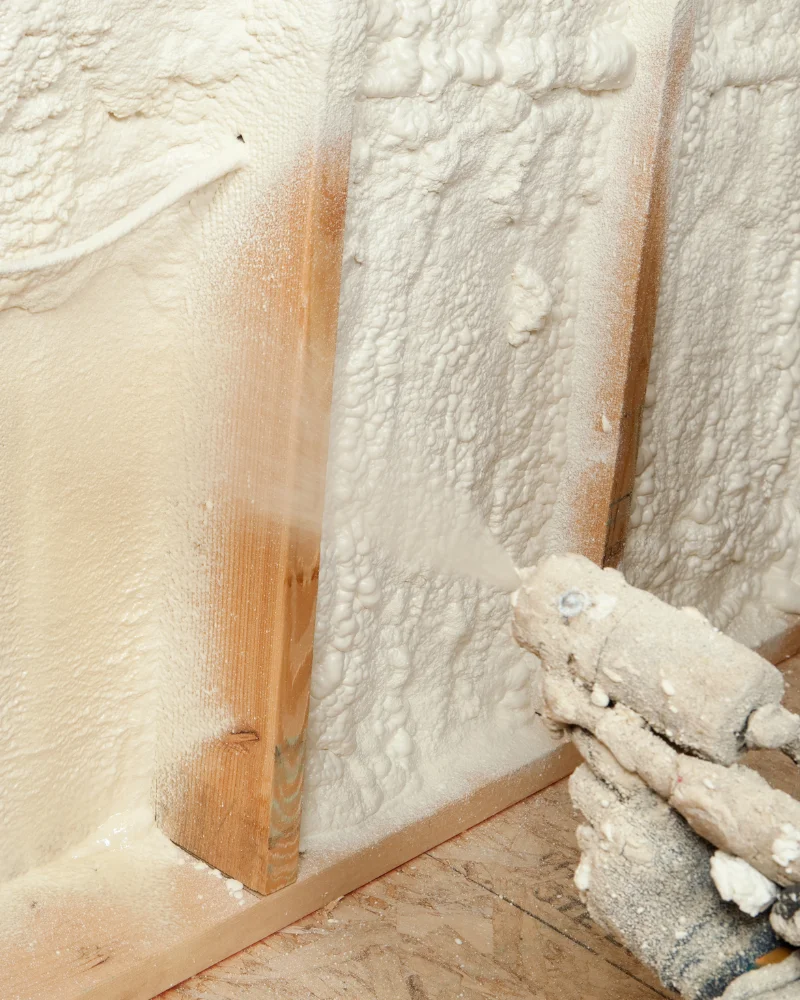
Icynene is a relatively new option when it comes to eco-insulation. Its making waves with its innovative spray foam made from castor oil. This insulation foam expands to over 100 times its natural volume when released into a wall or roof cavity, effectively sealing air leaks and drafts while buffering noise levels.
Homeowners report a 30-50% reduction in energy bills within the first year of installation.
Icynene’s eco-friendly credentials are bolstered by its use of recycled materials and eco-friendly blowing agents, which eliminate the need for harmful chemicals in both the production and installation process.
For its open-cell structure, Icynene boasts an impressive R-value of 3.6 per inch, while its denser, closed-cell option offers an even higher R-value ranging from 6.0 to 7.1 per inch.
One potential drawback of Icynene’s superior sealing power is the need for a ventilation system to be installed with it, as the spray foam creates such a tight seal that it can trap moisture.
- Cost: $$$
- Material source and sustainability benefits: Made with recycled materials and water-blown blowing agents, eliminating harmful chemicals.
- Drawbacks/Considerations: More expensive than traditional insulation options like fiberglass. May emit mild odors during curing, requiring proper ventilation. Closed-cell foam can trap moisture, requiring proper ventilation strategies in some climates.
- DIY Friendly? No, Icynene spray foam installation requires certified professionals due to the specialized equipment and application process.
- Notable Features: R-value: Open-cell: 3.5 – 3.8 per inch, Closed-cell: 6.0 – 7.1 per inch | Noise dampening: Good | Reduces air leaks, lowering overall energy consumption | Uses recycled materials in production
9. Mycelium
Mycelium composite insulation is a brand-new eco-friendly insulation alternative. It harnesses the power of mycelium, the intricate network of fungal threads found in mushrooms.
Creating this insulation material involves cultivating mycelium from agricultural waste and mycelial cultures and then mixing it with organic matter to form a dense, interconnected structure. What’s really cool is that this insulation material can be molded into various shapes and will continue to grow, making it even stronger.
With an R-value of 3.5 to 4 per inch, mycelium insulation is comparable to many traditional options and provides good sound absorption.
However, it still is a relatively new material with limited availability, and performance will likely vary as its use becomes more widespread. Due to potential performance variations and proper handling requirements, professional installation is recommended.
- Cost: $$ – $$$
- Material source: Grown from fungal mycelium using agricultural waste. Renewable and potentially fast-growing.
- Drawbacks/Considerations: Relatively new material, limited availability, performance data may vary, fire resistance may require specific treatments.
- DIY friendly? No, professional installation likely recommended due to the newness of the material and potential for variations in performance.
- Notable Features: R-value: 3.5 – 4 | Noise dampening: Good | Fire-resistant (depending on formulation) | Renewable resource, utilizes waste materials | Biodegradable at end-of-life
Recyclable Insulation Materials
10. Recycled Fiber Glass
When it comes to eco-friendly insulation options, recycled fiberglass is a popular choice that gives foam insulation a run for its money. With an R-value ranging from 2.2 to 3.8 per inch (depending on how it’s made) and a recycled content of around 20% recycled insulation materials, this insulation is a winner when it comes to green insulation materials.
Since it’s made with glass, it’s pretty easy on the environment and offers a good balance of thermal resistance and noise reduction (though not quite as good as wool). Plus, it’s way more fire-resistant than foam, able to withstand temperatures up to a scorching 1,100 degrees Fahrenheit.
But before you jump on the fiberglass bandwagon, let us warn you. Installing this stuff can be a safety nightmare if you’re not prepared. You’ll need to wear a mask, goggles, and gloves, and be careful not to compress the material.
And for those tricky spots like spaces next to studs and headers? You’re better off using a different type of insulation, as fiberglass can actually promote air infiltration and heat loss.
And if you’re dealing with a damp basement or a cold concrete wall, steer clear of fiberglass. It’s not great for damp areas of the home.
- Cost: $- $$
- Material source: Made from recycled glass and other materials. Reduces use of virgin materials and landfill waste.
- Drawbacks/Considerations: May contain small fibers irritating to skin and lungs, requires proper ventilation to avoid respiratory issues.
- DIY friendly? Yes, batts can be DIY friendly for some applications, follow safety precautions when handling.
- Notable Features: R-value: 2.2 – 3.8 per inch | Noise dampening: Good | Good sound absorption | Fire-resistant
11. Recycled Plastic
If you want an insulation option that’s good for your home, wallet, and the planet, give recycled plastic insulation a try. Recycled plastic insulation is a new, eco-friendly option made from recycled fibers sourced from post-consumer and post-industrial plastic waste.
Plastics are poor heat conductors, which makes which makes them great insulators. The fibers create tiny air pockets that enhance the thermal properties, making recycled plastic a good option for colder climates.
But the benefits don’t stop there. By using recycled plastic insulation, you’re not just saving energy and money on your bills, you’re also helping to save the planet. Did you know that over 8 million tons of plastic waste end up in our oceans every year? By choosing recycled plastic insulation, you’re giving these plastics a new purpose and reducing the amount of waste that ends up in landfills and oceans.
Though it may cost more upfront than fiberglass batts, recycled plastic insulation’s durability, energy efficiency, and environmental benefits make it a worthwhile long-term investment. Plus, it’s lightweight and easy to install, potentially saving on installation costs.
- Cost: $$
- Material source: Made from recycled plastic bottles and other plastic waste. Reduces landfill waste.
- Drawbacks/Considerations: Limited availability in some areas, performance data may vary depending on the type of plastic used, fire resistance may require specific treatments.
- DIY friendly: Potential for DIY with batts or loose-fill, proper safety measures are crucial when handling recycled plastic insulation materials.
- Notable Features: R-value: 3.5 – 4 per inch | Noise dampening: Varies depending on the type of plastic used | Recycled content, helps divert plastic from landfills | Moisture resistant | Can be lightweight
And that has been our complete roundup of the best eco friendly insulation materials for home for 2024!
Choosing the right eco-friendly insulation for your home can be a tough decision since it has a far-reaching impact on your comfort, energy bills, and environmental footprint.
When selecting the best option for your home, be sure to consider factors like your local climate, specific insulation needs for different areas of your house, your budget, and any potential air quality concerns.
From natural insulation materials like hemp and sheep’s wool to high-tech solutions like aerogel and Icynene, there’s no shortage of sustainable insulation materials to choose from in 2024.
By choosing sustainable insulation options that are good for your health and good for the planet, you’re not just investing in a more comfortable and energy-efficient home. You’re also doing your part to create a greener future for everyone.
